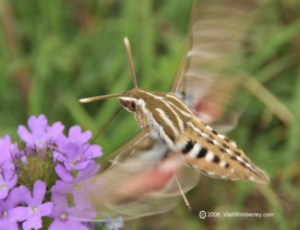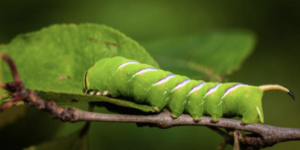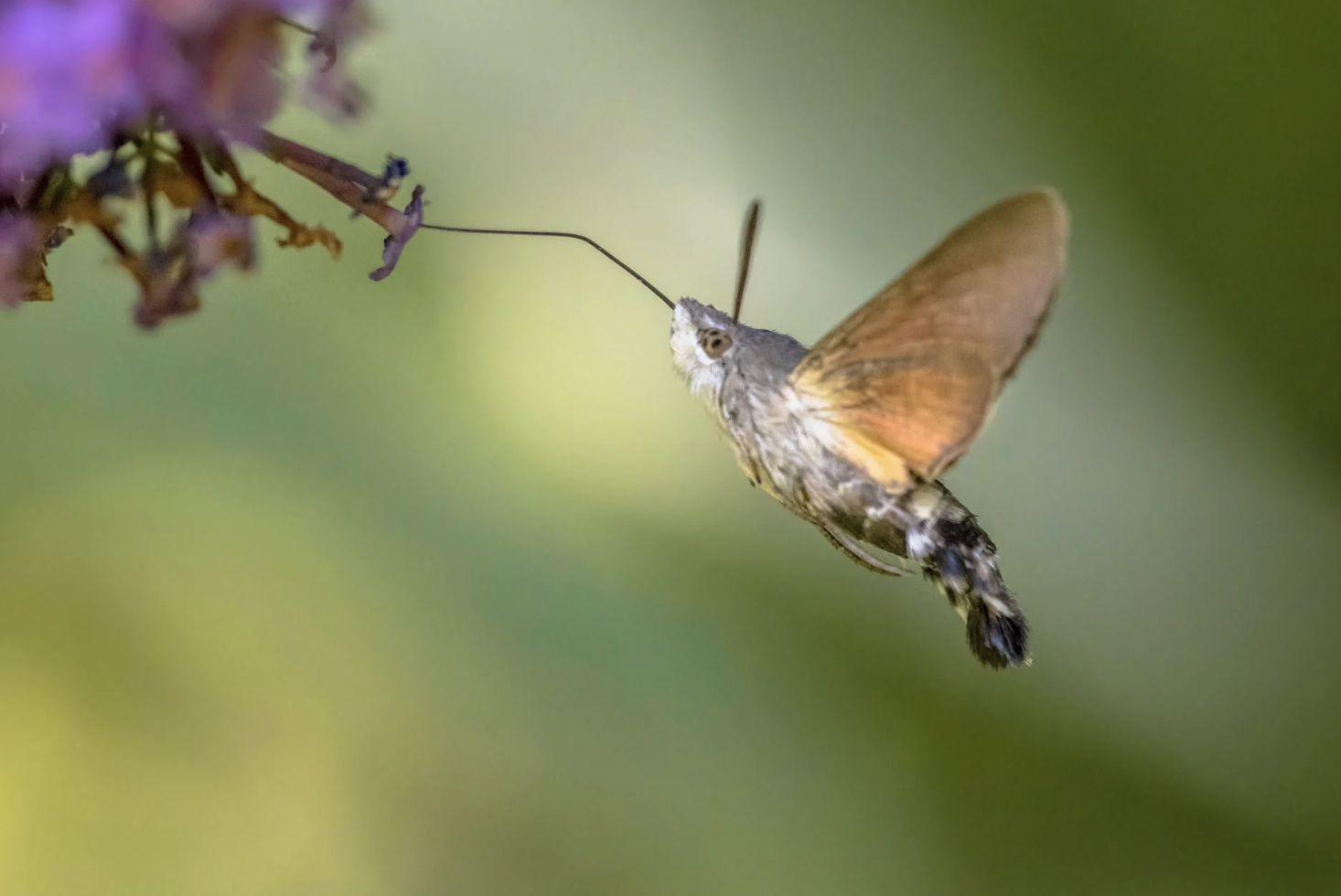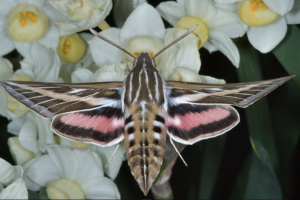A Closer Look at the Texas Hummingbird Moth
Ever been out in your backyard sipping on sweet tea when suddenly, this little blur of brown and white zooms by, hovering over your flowers like a tiny, loco helicopter? If you have, chances are you’ve met the Texas Hummingbird Moth. If you haven’t had the pleasure of spotting one just yet, stay tuned, we’d hate for you to miss out on one of nature’s coolest little spectacles.
The Marvel of Mimicry
Don’t let its name fool you. This critter isn’t a bird at all, it’s actually a moth, and one of the most fascinating insects we’ve got here in Texas. Folks often mistake ’em for hummingbirds because of how they dart around and hover, but if you look close, you’ll see the “Genus Hemaris”, who have those big, feathery antennae.
 This mimicry isn’t just a coincidence; it’s a survival strategy. Birds, the natural predators of many insects, are deterred by the moth’s rapid, hummingbird-like movements. They might mistake the moth for a feisty little bird and decide it’s not worth the trouble. These little buzzing buddies are important pollinators, just like bees and butterflies. They love nectar, and they’ll zip from flower to flower, helping our gardens thrive. You’ll often find them hanging around trumpet-shaped blooms like honeysuckle, petunias, and phlox. So, if you want to attract these cool critters to your yard, plant some of those flowering beauties. But gardeners beware, they will munch on your tomato plants in caterpillar form, so it’s a bit of a love/hate in that scenario.
This mimicry isn’t just a coincidence; it’s a survival strategy. Birds, the natural predators of many insects, are deterred by the moth’s rapid, hummingbird-like movements. They might mistake the moth for a feisty little bird and decide it’s not worth the trouble. These little buzzing buddies are important pollinators, just like bees and butterflies. They love nectar, and they’ll zip from flower to flower, helping our gardens thrive. You’ll often find them hanging around trumpet-shaped blooms like honeysuckle, petunias, and phlox. So, if you want to attract these cool critters to your yard, plant some of those flowering beauties. But gardeners beware, they will munch on your tomato plants in caterpillar form, so it’s a bit of a love/hate in that scenario.
Where to Find Them
The Texas Hummingbird Moth is native to North America and can be found throughout Texas. They are particularly abundant in gardens, meadows, and areas with plenty of flowering plants. They are not just limited to Texas; these moths can also be found in various parts of the United States, from the East Coast to the Midwest, and even into parts of Canada. They thrive in regions where their favorite nectar plants are plentiful.
More Than Meets the Eye
These insects are incredibly fast. Their wings beat so quick, it’s a blur to the human eye. And, get this, they can hover in midair for up to 80 seconds straight!
@viverogrowers The Hummingbird Moth is so fast!💨 I managed to capture a small video of him on the blooms of the Silver Texas Mountain Laurel Tree. If you have not ever experienced the fragrance of the flowers on these you are missing out!! #tree #plantsoftiktok #flowers #blooms #nature #viverogrowers #fyp #sofast #atx
Another cool thing about Hummingbird Moths is their camouflage. During the day, they like to rest on tree trunks or fences, and with those brownish-red wings and fuzzy bodies, their coloring blends right in. It’s like they’re playing hide-and-seek with us, but when the sun goes down, they come out to play!
 While we often focus on the adult moth, let’s not forget about their lifecycle, the caterpillar stage is equally intriguing.Those green hornworms are actually the larval form of the hummingbird moth. They have a voracious appetite munching on leaves, and can quickly defoliate plants, being a pest in the garden. However, they also play a crucial role in the ecosystem as a food source for other creatures. Then they spin themselves a cocoon and come out looking like a million bucks – or at least like a hummingbird in moth form, ready to pollinate your petunias.
While we often focus on the adult moth, let’s not forget about their lifecycle, the caterpillar stage is equally intriguing.Those green hornworms are actually the larval form of the hummingbird moth. They have a voracious appetite munching on leaves, and can quickly defoliate plants, being a pest in the garden. However, they also play a crucial role in the ecosystem as a food source for other creatures. Then they spin themselves a cocoon and come out looking like a million bucks – or at least like a hummingbird in moth form, ready to pollinate your petunias.
Fun Facts
- Hummingbird Moths are known for their hovering ability, which is quite rare among insects.
- They can fly at speeds of up to 12 miles per hour.
- Unlike many moths that are nocturnal, these moths are active during the day, especially at dusk.
- Their lifecycle from egg to adult takes about a month, with most of their lifespan spent in the larval stage.
Find more facts here!
Conservation Concerns
Like many other pollinators, the Texas Hummingbird Moth faces challenges. Habitat loss due to urbanization and pesticide use has impacted their populations. It’s important to create pollinator-friendly gardens and reduce our reliance on harmful chemicals to protect these beneficial insects.
If you’re eager to see these amazing creatures up close, there are several things you can do to create a hummingbird moth haven:
- Plant nectar-rich flowers: Honeysuckle, petunias, phlox, and trumpet vine are all great choices.
- Provide a water source: A shallow bird bath or a dripping hose can attract these thirsty insects.
- Avoid pesticides: These chemicals can harm hummingbird moths and other beneficial insects.
- Create a caterpillar-friendly environment: While they can be pests, caterpillars are an essential part of the hummingbird moth’s life cycle. Consider planting some of their favorite food plants, such as grapevine and willow.
You can read more from us about the Butterfly (Management) effect here.
The next time you see a Texas Hummingbird Moth, take a minute to appreciate this amazing creature. It’s a reminder of the incredible biodiversity and a little bit of wild Texas is right in your own backyard. And remember, y’all, if you want to attract more of these little wonders, plant some flowers, lay off the pesticides, sit back, and enjoy the show.
Let’s all do our part to protect them and enjoy their beauty for generations to come.










